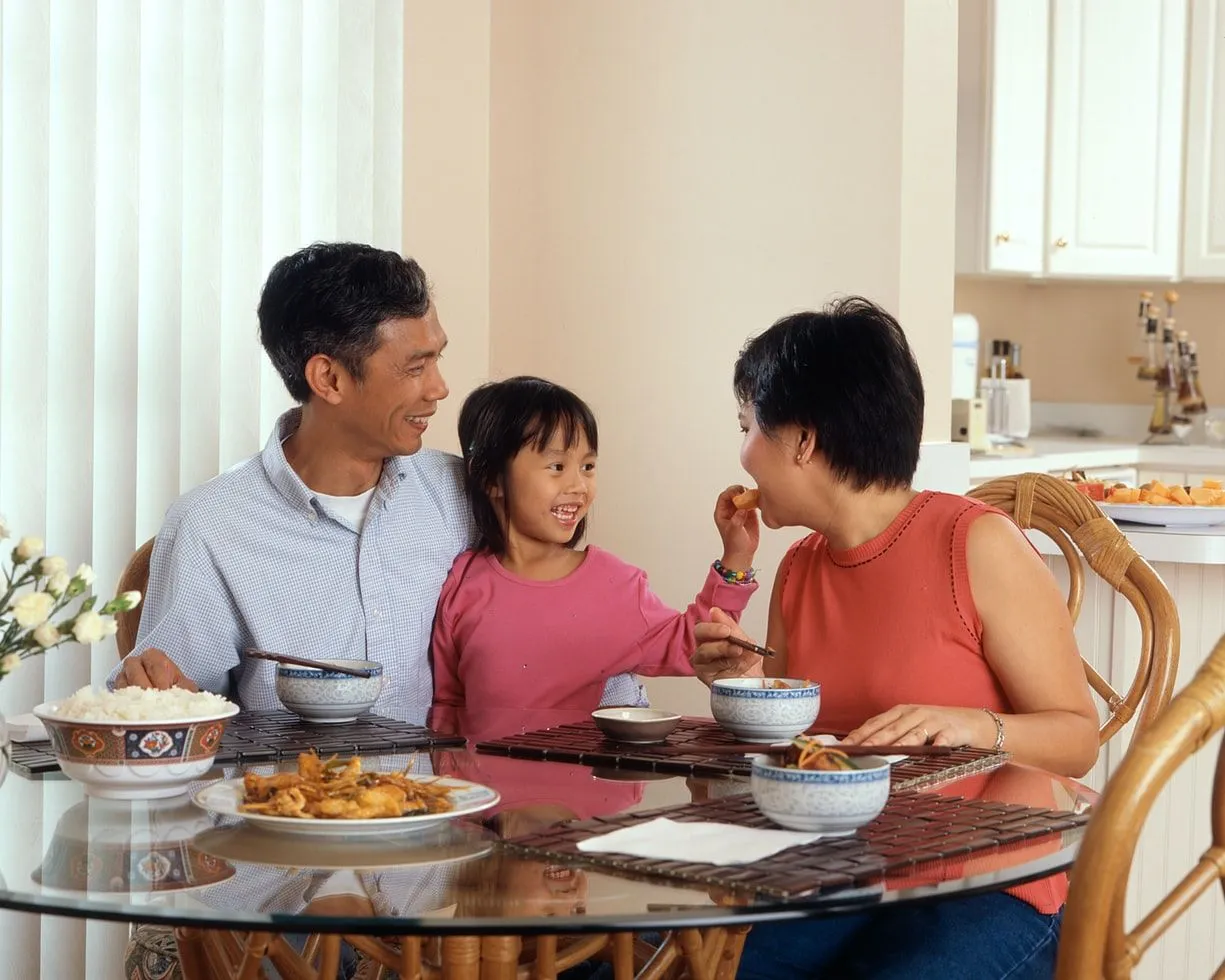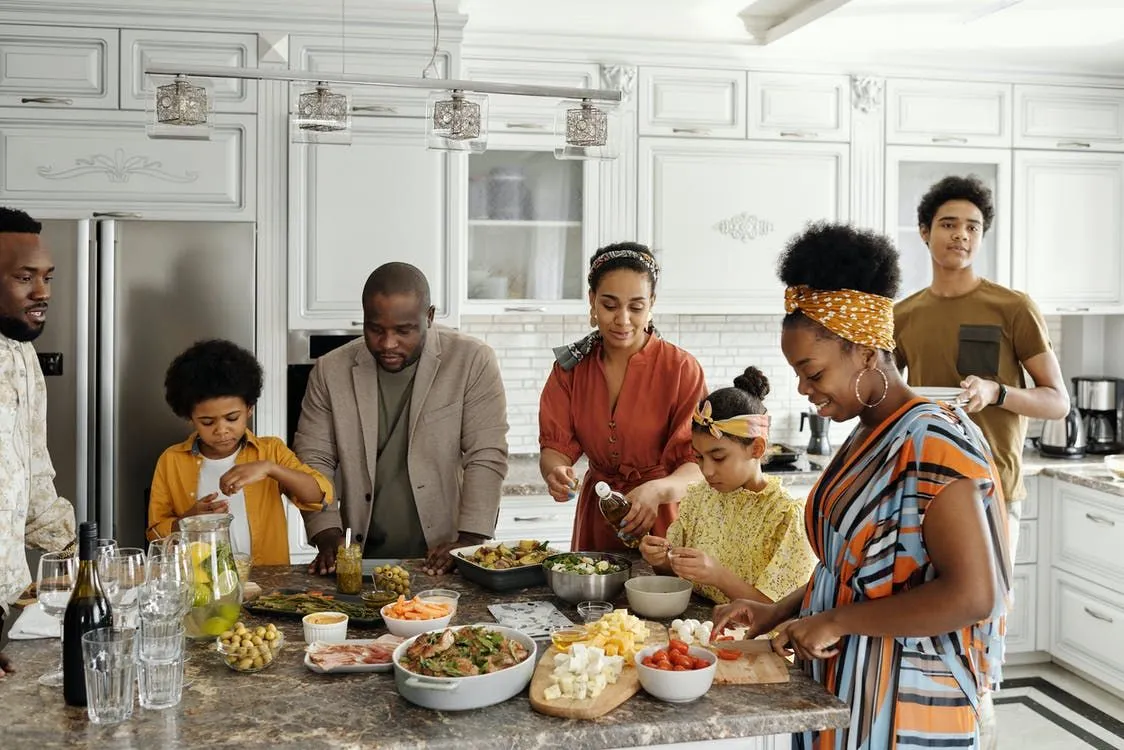FOR ALL AGES
It's a parent's worst fear to send their kids to a friend's house only to find out that they've been rude at the dining table.
Navigating kids' table manners is important, but can be stressful for parents, and leaves us feeling at a loss sometimes. When we think we've taught our children to eat with their mouth closed or ask to be excused after dinner, and are then completely ignored, it can be incredibly frustrating.
If your child's table manners leave a lot to be desired, then these handy etiquette tips will hopefully help transform bad manners into good manners in no time at all. It doesn't have to be daunting, if we take a relaxed approach at setting an example and showing our kids what we expect at mealtimes, pretty soon it will be second nature to them too. From simple table manners for kids to the perfect etiquette for special family occasions, these important ideas and list of table manners for kids will set your children up to be star dinner guests. Why not take a look at this article about [why manners matter] or this one about [3-year-old behavior] if you want to learn more great parenting ideas.
We have to learn to walk before we can run, and starting with the basics is a good idea when we try to teach our kids proper eating etiquette. If you're looking for a list of good rules that you can adopt in your home, then we're here to help.
Always come to the table for dinner time with clean hands. Most kids like to get muddy and end up touching all sorts with their hands, so it's best to wash them before they get anywhere near their mouth just in case.
For younger children, learning to hold a knife and fork in the correct way is a good social eating skill to teach. Starting off holding the cutlery in their correct hands will mean it is second nature by the time they are a little bit older.
To chew with your mouth closed is a rule in most households, and a good basic guideline to teach. Encourage kids not to talk while they're eating and to eat small bites of their food. Most importantly, if you're going to preach it then make sure grown-ups aren't guilty of it too.
If you use napkins at mealtimes, teach your kids to get into the habit of putting their napkin on top of their lap while they're eating their food. Above all else, it'll catch any messy drips and their clothes will stay cleaner after meals.
One of the most important pieces of etiquette we like to encourage among kids of any age is to say please and thank you. This easy way to show appreciation will help with gratitude and just generally makes people feel nice.
Try to keep the dinner table a technology-free zone. This means no tablets or phones at the table and encourages everyone to talk to each other during the meal, which is an important thing to start young and try to keep going into the teenage years.
A rule we like to have in place is for each kid to always clear their own plate after a meal, and also to clear the plate of someone else too. It's a good way to encourage kindness in children, and important when parents work hard making dinner and often are left clearing up while kids run off to play.
On that note, we also like to teach our kids to offer to help to lay or clear the table every mealtime, and especially when they visit friends or family.
As well as these seven key points, three more rules make up the basic 10 table manners. These are to only take small sips of drinks, and only once they have finished their mouthful; to eat at approximately the same pace as others; and to sit up straight, without elbows on the table.

This simple step-by-step guide to good table manners for kids is a great thing to print out and keep next to the dinner table to remind them of how they should act. Children are much more likely to remember what they learn if it's repeated, and reading them before you eat can be a good way to keep everyone clear on what is expected. Whilst the decision is up to each individual parent, it is recommended to start teaching your child basic table manners before the age of three.
Firstly, we need to practice leading by example. Kids learn by watching parents and older siblings, so if we want them to say please and thank you and close their mouths when they're eating, then we need to be sure we're doing the same.
Building a routine around dinner time will make it easier for you to teach your children what you expect as a family. If you want kids to wash their hands before a meal, then set up a washing station at the kitchen sink, and take turns as a family to wash the germs away. We are a big fan of a cleaning song to help your child wash hands for long enough to get rid of any pesky germs.
Learning table manners is probably going to take a bit of time for your child, and having lots of different things they need to remember can be a little bit overwhelming. We find it best to put the emphasis on praising good manners around the table instead of getting angry when your child is breaking the rules. In general, it makes for a nicer experience for everyone.
Something that lots of parents find works well when teaching polite etiquette to their kids is creating a sticker chart. This is best for kids that are younger in age, and we can encourage them with a reward sticker for every successful mealtime. Make a reward chart for mom and dad too so that your child doesn't feel singled out, and get the whole family taking part and scrubbing up their manners.
If you are taking your child to a family meal where you want to make sure they have the best possible etiquette, it may be a good idea to role-play a little bit of the experience beforehand so children know what is expected of them.
Follow each of the steps from this article, and your kids will know exactly how to behave at the table always!

If you want some support on teaching the rules of good manners and social etiquette, then these are our favorite books that are entertaining as well as educational for your kids. When your child starts loving a book about manners, you may just see their behavior start to change without them even having to be taught!
We love 'Don't Dip Your Chips In Your Drink, Kate' by Caryl Hart for a funny look at a kid with very bad manners. This can be a good book for parents feeling stressed out about the little things, to put a little bit of fun into learning the rules.
Any dinosaur-obsessed kid will want to follow the examples set by the dinosaurs in Jane Yolen's book, 'How Do Dinosaurs Eat Their Food?' With clear pictures that teach how to hold a knife and fork and say please and thank you, everyone will want to start eating like a dinosaur after reading it.
You'll fall in love with the adorable artwork in 'Penguin Says "Please"' by Michael Dahl. Little ones can learn all about what may happen if someone forgets to say please, so it is perfect for teaching preschool table manners for kids.
One of our favorite books about rules for table manners for kids is 'Emily's Everyday Manners' by Peggy Post and Cindy Post Senning. Use this book to show your kids that polite etiquette is for every day and not just for special occasions.
Teach kids of any age about the consequences of their behavior with Ellen Javernick's funny book, 'What If Everybody Did That?' If you are struggling with someone who never seems to care about breaking the rules, this is a great choice to help them understand.
If you found this article helpful, then why not take a look at our guide to [your evening routine] and different [types of behaviour related to psychology].
Read The Disclaimer
At Kidadl we pride ourselves on offering families original ideas to make the most of time spent together at home or out and about, wherever you are in the world. We strive to recommend the very best things that are suggested by our community and are things we would do ourselves - our aim is to be the trusted friend to parents.
We try our very best, but cannot guarantee perfection. We will always aim to give you accurate information at the date of publication - however, information does change, so it’s important you do your own research, double-check and make the decision that is right for your family.
Kidadl provides inspiration to entertain and educate your children. We recognise that not all activities and ideas are appropriate and suitable for all children and families or in all circumstances. Our recommended activities are based on age but these are a guide. We recommend that these ideas are used as inspiration, that ideas are undertaken with appropriate adult supervision, and that each adult uses their own discretion and knowledge of their children to consider the safety and suitability.
Kidadl cannot accept liability for the execution of these ideas, and parental supervision is advised at all times, as safety is paramount. Anyone using the information provided by Kidadl does so at their own risk and we can not accept liability if things go wrong.
Kidadl is independent and to make our service free to you the reader we are supported by advertising.
We hope you love our recommendations for products and services! What we suggest is selected independently by the Kidadl team. If you purchase using the buy now button we may earn a small commission. This does not influence our choices. Please note: prices are correct and items are available at the time the article was published.
Kidadl has a number of affiliate partners that we work with including Amazon. Please note that Kidadl is a participant in the Amazon Services LLC Associates Program, an affiliate advertising program designed to provide a means for sites to earn advertising fees by advertising and linking to amazon.
We also link to other websites, but are not responsible for their content.
Was this article helpful?



We’ll send you tons of inspiration to help you find a hidden gem in your local area or plan a big day out.



Check your inbox for your latest news from us. You have subscribed to:
Remember that you can always manage your preferences or unsubscribe through the link at the foot of each newsletter.